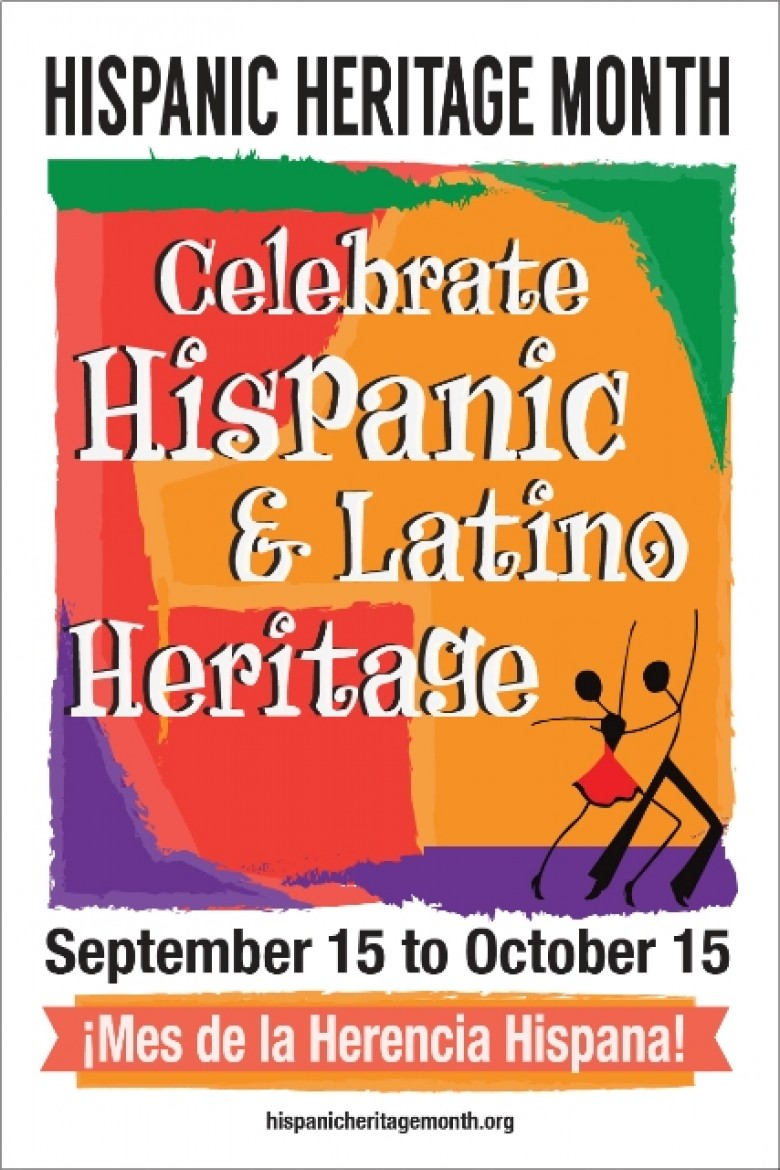It's National Hispanic Heritage month. From September 15 - October 15 the contributions made by Hispanic and Latino Americans to the United States and the hispanic heritage and culture are celebrated. Why now? Because September 15th is the anniversary of independence for several Latin American countries: Costa Rica, El Salvador, Guatemala, Honduras and Nicaragua, and many other Latin countries celebrate their independence during this period, as well.
Hispanic or Latino?
What the heck is the difference? It turns out there is one. Latino means those from Latin America and includes Brazil, while Hispanic means those of Spanish-speaking origin and includes Spain. Who knew? The term Hispanic was first used by the U.S. Census Bureau in 1970 to describe the numerous Spanish speakers in the United States. And Latino was adopted by the U.S. Census Bureau in the 2000 count.
My son’s first (or birth) mother Nicole is Puerto Rican, or Boricua. National observances are wonderful opportunities for those of us who have adopted transracially to bring more of our child’s heritage home. For instance, right here, right now - I learned the word Boricua, which is derived from Borinquen, the original name the indigenous people gave the island of Puerto Rico.
“Boricua,” from “Borinquen,” is what Puerto Ricans call each other, particularly on the U.S. mainland. Using the name is a form of bonding, reaffirming ancient roots. (La Prensa)
Isn't language wonderful! Shouldn't we all have at least two?
Reaffirm Roots
I am a white adoptive parent (W.A.P.). My son is Black (paternal side) and Hispanic (maternal side). According to the U.S. 2010 census, in Buffalo, NY there are 115,697 white people and 121,172 Black and Hispanic people, which means my race and ethnicity are no longer predominate, my son’s are. While there are more people of color than white people in Buffalo, N.P.R. tells us that we are one of the most segregated cities in this country.
During this presidential election season, there has been demagogic rhetoric about building a wall between the U.S. and our Hispanic southern neighbors. Before we build more barriers, perhaps we should learn how to scale those invisible but powerful walls that divide our city and citizenry. The act of joining together with respect and love to celebrate culture builds bridges instead of walls.
Keep it Local
The Hispanic Heritage Council of Western New York has put together a variety of Hispanic heritage events. On September 30th, they will showcase latin music and dance at their main event at Kleinhan's Music Hall, featuring Los Hermanos Morenos and the Borinquen Dance Theatre. This event is free and tickets are available through Kleinhan’s ticket office. Also at Kleinhan’s is the BPO celebrates Hispanic Heritage month with Viva La Musica on October 9th. As I am on a journey of learning and discovery, I hope to see Latino Americans: 500 Years of History: The New Latinos, Episode IV on Sunday, October 2nd at the Buffalo Public Library. This PBS series is the first major documentary about Latino history, culture, and experience in America. The Hispanic Heritage Council kicked off the month-long celebration at the Buffalo Public Library.
Bring it Home
At an annual Birth Mother’s Day brunch hosted by Adoption STAR, Nicole and I shared a Puerto Rican dish of rice and beans (called Habichuelas Guisadas). She recalled that on weekends her father cooked the dish for her family. Because he made the recipe from memory, I found recipes on line and she helped modify them. I intend to make it for our son - a bean lover - for National Hispanic Heritage month and, if I can get it right, add it to the family recipe box.
INGREDIENTS
1 pound dried small red beans (do not use kidney beans) ½ teaspoon salt 14 cups water 1 tablespoon olive oil 4 strips bacon, cut into pieces 1 large onion, chopped 3 cloves garlic, chopped 1 green bell pepper, chopped 2 tomatoes, peeled and chopped 1 teaspoon tomato paste mixed with 1 teaspoon water 1 sprig each of cilantro and fresh parsley, tied together to make a bouquet garni Salt to taste ½ teaspoon white vinegar 1 teaspoon oregano 1 hot green pepper, chopped
PREPARATION
Rinse the beans thoroughly and pick out any foreign matter. Place in a bowl and cover with 6 cups of cold water; let sit overnight. (Alternatively, place the beans in a saucepan with 6 cups of cold water and boil for 2 minutes; set aside for 1 hour.) Drain the beans and place in a large saucepan with 1/2 teaspoon of salt and 8 cups of water. Bring to a boil and simmer at medium heat until the beans are tender, about 1 to 1 1/2 hours. Meanwhile, make a sofritoor paste. In a skillet, heat the olive oil and the bacon until the fat is rendered. Add the onion, garlic, bell pepper and tomatoes and cook for 10 to 15 minutes or until the vegetables are soft. Add the diluted tomato paste and the bouquet garni. Cook for 5 minutes. Add the paste to the beans and cook, stirring, for 15 minutes. Add salt to taste, vinegar, oregano and hot pepper and cook an additional 15 to 20 minutes, or until the beans are very creamy.
¡Qué aprovechan!

